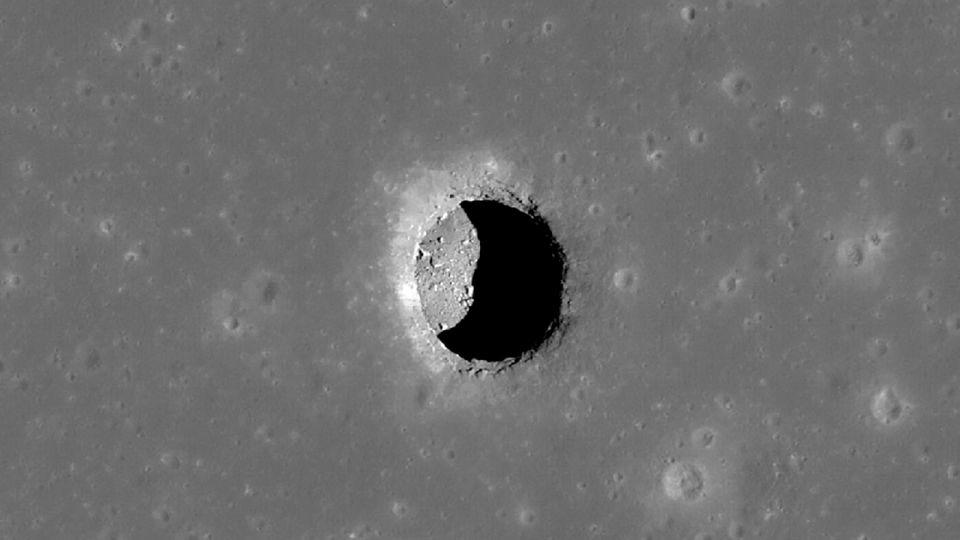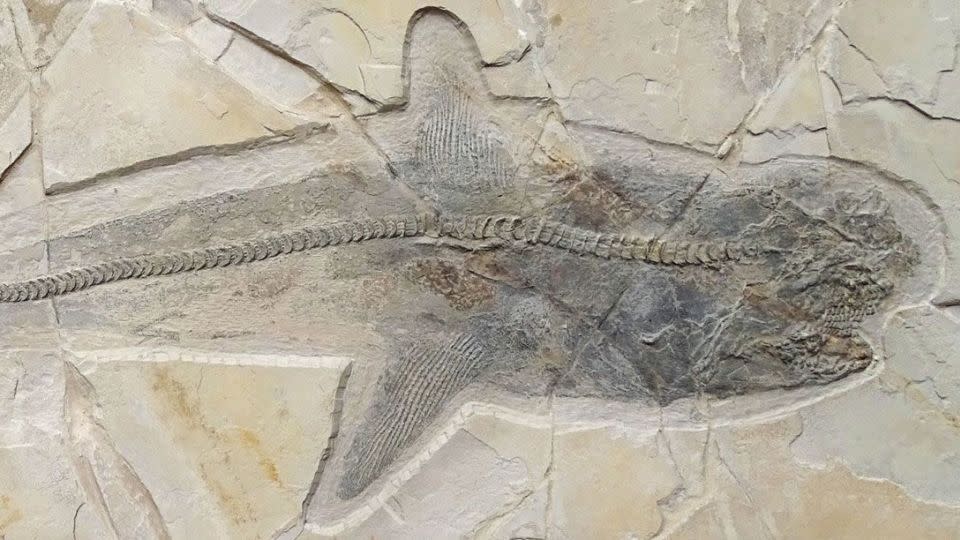Moon cave that could shelter astronauts found beneath the Sea of Tranquility
- Oops!Something went wrong.Please try again later.
Editor’s note: A version of this story appeared in CNN’s Wonder Theory science newsletter. To get it in your inbox, sign up for free here.
As the full moon shines in the night sky this weekend, take a moment to revel in its beauty and search for a large, dark plain.
The surface feature is Mare Tranquillitatis, or the Sea of Tranquility, where the Apollo 11 mission landed on the afternoon of July 20, 1969.
The full moon won’t peak until 6:17 a.m. ET Sunday, but the silvery orb will still appear at its best Saturday, the 55th anniversary of NASA astronauts Neil Armstrong and Buzz Aldrin conducting humankind’s first moonwalk.
Now, as NASA and other space agencies plan for a more established human presence on the moon through the Artemis program, it turns out that the Sea of Tranquility may have an unexplored treasure worth revisiting.
Lunar update

Scientists have found a subterranean cavity beneath the Sea of Tranquility, and it may provide shelter for future lunar astronauts in the form of a cave.
Lunar caves, or underground passages formed by volcanic processes during the moon’s early history, are connected to pits covering the lunar surface.
The long, wide cave, found by reviewing archival NASA data, could be used to protect astronauts from harsh radiation and extreme temperature swings as well as provide a new avenue to study lunar rocks.
Other worlds
Astronomers have detected an exoplanet with an orbit shaped like a cucumber that may be turning into another type of world.
The unusual orbit, which changes temperatures on TIC 241249530 b from a warm summer day to hot enough to melt titanium, may be a sign that the planet is moving closer to its star.
Astronomers estimate that in hundreds of millions of years, the planet will only take a few days, rather than six months, to orbit its star and become a hot version of Jupiter.
Separately, the European Space Agency plans to send a spacecraft named Ramses to accompany the asteroid Apophis as it makes a safe, close approach of Earth — 10 times nearer than the moon — in April 2029. The spacecraft could capture quakes and landslides on the space rock as it is affected by Earth’s gravity.
Fantastic creatures

If pe ts with flat faces, such as French bulldogs and Persians, or puffy cheeks like Maine coons, squint and show behavioral problems, they may have a painful condition: eyelid disease.
Some dog and cat breeds are genetically more likely to have issues with malformed eyelids, which causes the eyelashes to scrape against the corneas.
But what humans would call cosmetic surgery is helping pets like Hamilton, a 4-year-old English bulldog, overcome the pain of misshapen eyelids.
“These nip and tucks are not cosmetic; they are critical to the health of the animal,” said Dr. Dana Varble, chief veterinary officer for the North American Veterinary Community.
The wonder
The Curiosity rover was about to settle in to a new exploration site on Mars when it crunched over a rock — and happened to make the “most unexpected” discovery during its 12-year mission to date, according to mission scientists.
Curiosity’s wheels revealed that the inside of the rock was something never seen before on the red planet: yellowish-green sulfur crystals. And it turns out there are a whole field of them within an ancient channel carved into the side of Mars’ Mount Sharp.
But scientists don’t know how, when or why the sulfur formed on Mars, creating a new riddle for the rover’s team to solve.
Meanwhile, the newly inaugurated African Space Agency is launching satellites to improve quality of life on Earth, such as monitoring water quality and preventing illegal mining and fishing.
A long time ago

While dinosaurs roamed Earth during the Cretaceous Period, sharks with unusual teeth swam the seas.
Sharks in the genus Ptychodus had rows of large, rounded chompers that crushed shelled prey. But scientists have only been able to speculate on the predators’ appearance after finding just teeth.
Paleontologists recently unearthed a nearly complete skeleton of the ancient shark in the Mexican state of Nuevo Léon, unraveling the mystery of the prehistoric fish’s appearance.
Separately, cut marks on the fossilized remains of a giant armadillo-like creature in Argentina reveal that humans butchered the animal more than 20,000 years ago — and that the earliest people in the Americas settled there earlier than expected.
Explorations
Delve into these unexpected stories:
— Experts in New Zealand are determining whether a creature that washed ashore is a spade-toothed whale — a species considered nearly mythical because scientists have never recorded a live sighting.
— NASA transmitted Missy Elliott’s “The Rain (Supa Dupa Fly)” about 158 million miles to Venus, marking the first time a hip-hop song has been sent to space.
— In Cambodia, a record-breaking number of Siamese crocodile eggs just hatched in the wild, providing hope for a critically endangered species that had nearly been driven to extinction.
— A blazing meteor soared over New York City this week and disintegrated above New Jersey, and sky-gazers captured videos of the rare event.
Like what you’ve read? Oh, but there’s more. Sign up here to receive in your inbox the next edition of Wonder Theory, brought to you by CNN Space and Science writers Ashley Strickland and Katie Hunt. They find wonder in planets beyond our solar system and discoveries from the ancient world.
For more CNN news and newsletters create an account at CNN.com

